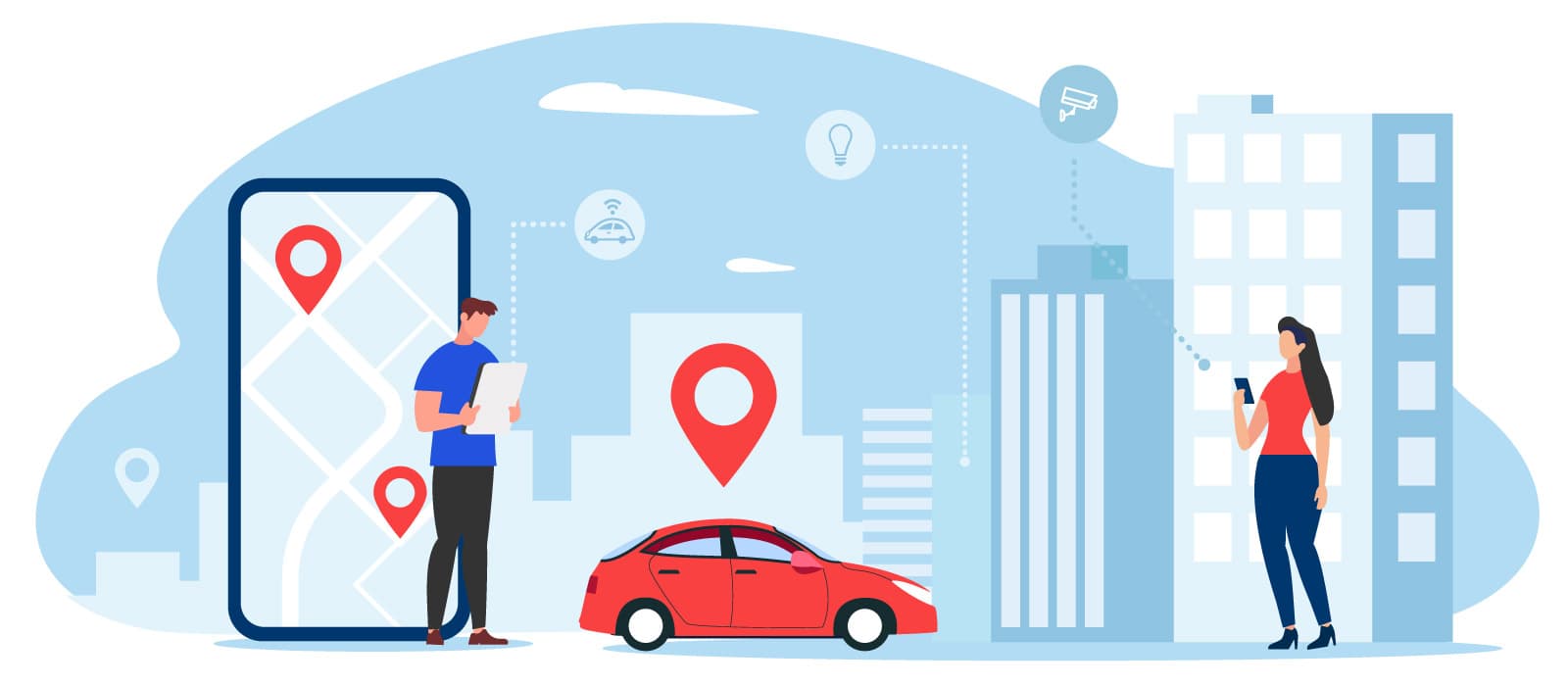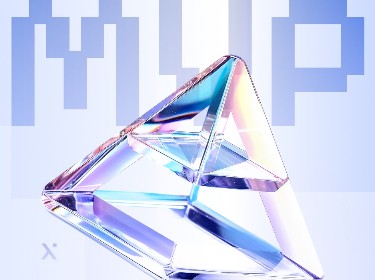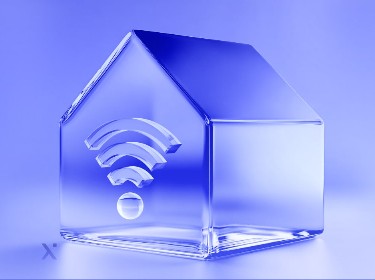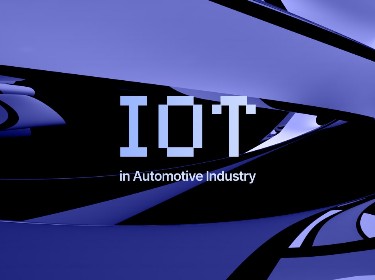As the IoT rapidly extends the Internet to everyday objects, innovative and even more sophisticated solutions continue to enter the market and transform industries. So, you’d better be in the loop and learn more about the latest IoT applications and devices to keep up with the times.
The Internet of Things (IoT) is a new computation paradigm that allows everyday objects to connect to the Internet, exchange data with servers and other connected things, and make the world ‘smarter’ for their users. In 2021 there are over 35 billion IoT active devices across the globe, solving society’s most pressing problems. These devices are in our cities, homes, hospitals, schools, cars — everywhere, in fact.
IoT devices play a pivotal role in enhancing living standards through smart healthcare as well as home and city solutions. For enterprises and organizations, IoT offers efficient automation, an improved supply chain, and remote monitoring. In industrial environments, IoT facilitates intelligent manufacturing, efficient production, and better customer interaction.
Read on to find out about the difference IoT is making in today’s world.
What is IoT?
IoT is a network in which things can connect to the Internet and transfer data. The connected objects in IoT are devices that can sense their environment and react to it. They can perform complex numerical computations with an increased capacity for connectivity.
The basic building blocks of IoT are connected to the Internet either directly or through gateways, depending on their connectivity capabilities. They are able to share information with the Cloud, a multi-layered harbor consisting of software suites that implement middleware, host value-added services, perform analytics, and facilitate user interface.
Cloud middleware ensures a reliable data flow between objects and other Cloud services. Data analytics tools help discover meaningful patterns in the collected data and serve as the building material for value-added services. User interfaces provide the means for interaction with the objects.
How big is IoT?
![]()
The rapid adoption of advanced digital technologies by enterprises around the world is driving the IoT market. According to the Fortune Business Insights report, IoT technology holds significant potential for the ICT sector global market, valued at $190 billion in 2018 and reaching $1.1 trillion by 2026. The global market will expand at a stupendous CAGR of 24.7% during this time.
According to Statista and data collected by Forbes, there are around 35 billion installed IoT devices. This figure is set to increase to 75 billion over the next five years. According to Microsoft market research, nearly 94% of businesses will use some form of IoT by the end of 2021. 83% of organizations reported improved efficiency due to the introduction of IoT technology.
The core IoT industries such as manufacturing, retail, transportation, government, and healthcare continue to introduce new IoT applications and solutions to their daily operations. Among the current IoT business adopters, 88% believe IoT is critical to their business success.
“The opportunity we have is to build a secure, intelligent platform that solves some of the world’s greatest problems at scale. That’s what’s possible with hundreds of billions of connections and the capabilities that we can deliver together.” — Chuck Robbins
IoT applications and device examples
Wearables
Wearables are smart connected devices that can be worn as accessories, implanted in the body, embedded in clothes, or tattooed on the skin. Wearable devices collect data through various embedded sensors and leverage connectivity to exchange data with services administered by the Cloud. What makes these wearables indispensable is their ability to augment the sensing capabilities of our bodies and to interact with a diverse range of other devices around us. It is predicted that the smart wearables market can reach $5.3 billion in 2024.
The most recent trend in wearables is smart rings. These rings are fashionable, compact, and packed with functionalities. K Ring, for example, is a contactless payment ring powered by Mastercard. It eliminates the need to handle cash, cards, or to touch a PIN pad. Oura, another smart ring, features infrared sensors for heart rate and respiration, NTC temperature sensors, and motion sensors. Likewise, Circular, a wellness and fitness smart ring, tracks sleep and also monitors daily activity.
Besides, rings can help us feel safer in risky situations. Nimb is a ring with a concealed button that alerts family, friends, emergency services, and the Nimb community in times of danger.
Wearables initially gained popularity through Fitbit and Garmin activity trackers. These days, Apple Watch, Samsung Galaxy Watch, and similar smartwatches are leading the market. Beyond the consumer electronics market, wearables have found numerous applications in healthcare and sports coaching. In 2021 21% of US adults wore a smartwatch or a fitness tracker on a regular basis.
Smart home
![]()
Smart homes became one of the earliest contexts for IoT. In the domestic setting, IoT devices offer convenience, cost-saving, and security for residents. The ability to control home appliances remotely through smartphone apps and various other interfaces has ensured the popular appeal of smart homes.
Smart homes feature miniature sensors, distributed around the living area, that sense and report the status of objects around the house. They can detect when home appliances are malfunctioning and alert owners. Smart locks, cameras, and motion detection systems are all deployed to guarantee home security, allowing owners to monitor the environment from anywhere. IoT devices help save energy as much as they minimise unwelcome intrusion.
One of the earliest IoT examples of convenience smart home devices on the market is SmartThings, now owned by Samsung. SmartThings aims to form ecosystems of compatible IoT devices that can be easily configured and controlled remotely through the Cloud. Swedish company Sensative produces magnetic strips with various sensors that make any home space smart. Cota, on the other hand, enables wireless power transmission and connectivity across the entire home.
As a part of the security offering, smart home devices include smart locks, cameras, and motion detection systems. These devices guarantee home security, allowing owners to monitor their homes from anywhere. August, for example, produces secure smart locks that can be controlled through a smartphone app and integrated with Alexa, Siri, and Google Home. Meanwhile, such products as Gate feature integrated cameras and locks.
The first to offer a mass-market product for saving energy in homes was Nest Thermostat. Nest today provides a range of smart home devices such as cameras, doorbells, alarm systems, locks, and smoke and gas alarms. Since monitoring is the first step in energy saving, many IoT companies offer solutions in this domain. Neurio home energy monitor, for example, delivers highly accurate, granular, real-time usage and solar production energy data.
IoT in Real Estate: The Smart Home Revolution Leading the Way
Smart cities
![]()
Smart cities are the result of the combined efforts of governments, technology companies, and civil institutions to create a sustainable urban environment and increase the quality of life through improved economic efficiency and social development. The roll-out of IoT solutions in smart cities is leading to a better functioning of the city. Smart cities leverage IoT devices such as connected sensors and meters to collect data. This data forms the backbone of the various intelligent solutions that eliminate traffic congestion, unlock sustainable development, and improve citizen safety.
Many governments around the world are implementing city-wide smart solutions to stimulate economic and social prosperity. The most notable IoT examples are New York, Amsterdam, Copenhagen, Singapore, Barcelona, and Los Angeles.
Healthcare IoT applications
Over the past decade, healthcare has implemented many data-intensive processes to speed up developments, increase efficiency, save more lives, and promote preventive medicine. The Internet of Things has opened up another world of possibilities. According to Forbes 646 million IoT devices were used in the medical sector in 2020. Most of the IoT initiatives in healthcare revolve around the improvement of care through remote patient monitoring (telemonitoring) and tracking, monitoring and maintenance of healthcare assets. But these are just the beginning. As digital technology transforms healthcare, more advanced and integrated approaches such as smart pills, smart home care systems, personal healthcare, robotics, and real-time health systems (RTHS) will start to emerge.
IoT is already making the lives of diabetes patients easier through connected continuous glucose monitors (CGMs). A CGM is a device that helps people with diabetes to continuously monitor their blood glucose levels for several days at a time. Smart CGMs Eversense and Freestyle Libre send the blood glucose data to a smartphone app, allowing users to monitor their glucose levels and react in time to an unusual trend. The FreeStyle LibreLink app also allows for remote monitoring by caregivers.
Similar to diabetes, asthma impacts hundreds of millions of people across the globe. IoT is offering smart solutions, which provide better insights into asthma symptoms and helps to control them. Propeller Health provides sensors that attach to an inhaler, connect to an app, and help people with asthma understand what might be causing their symptoms. It also tracks uses of medication and provides allergen forecasts. Health Care Originals, for its part, offers a wearable smart asthma monitor that detects the symptoms of an asthma attack before its onset, allowing the user to take action before the attack gets worse.
Agriculture IoT applications
IoT solutions are becoming vital components in agricultural information systems. Together with advanced analytics solutions, IoT helps AgriTech companies and individual farmers to balance and predict the supply and demand for agriculture products. IoT systems are already enabling producers and distributors to optimize their businesses. The emergence of these systems has an even larger effect on demand prediction, based on both the consumption data and factors such as the weather, cultivation soil conditions, plant disease, and pest damage. IoT solutions aim to help agricultural systems reach their full potential and productivity. Agriculture IoT market size is estimated to reach $30 billion by 2023.
One of the most popular IoT applications in agriculture is the weather station combined with crop soil sensors. These stations collect data from the field and send it to the Cloud. Data enables the mapping of climate conditions and the right action to be taken to optimize yield. Some IoT examples of these agricultural IoT devices are allMETEO, Metos, Libelium Smart Agriculture, Smart Elements, Arable, Semios, and Pycno.
Livestock monitoring is just as important as crop monitoring. IoT devices can be attached to the animals on a farm to keep an eye on their health and performance. Animal tracking helps collect data on stock health, wellbeing, and location. SCR by Allflex, Cowlar, and Afimilk use smart collar tags to monitor temperature, health, activity, and nutrition for individual cows as well as gather the collective information about the herd.
IoT helps to preserve agriculture resources such as water and energy. Precision irrigation systems including IRRIOT, CropX, and AquaSpy help farmers reduce their water bills through IoT-enabled smart irrigation. Similarly, the agriculture fleet management systems from John Deere help to cut operational expenses.
Industrial IoT examples
Industrial IoT (IIoT) utilizes IoT software and hardware tools to connect and synchronize a large number of devices, machines, and people in an industrial setting. IIoT enables smart industrial operations and transformational business outcomes through the deployment of advanced data analytics. The most promising features of IIoT are the reduction of human error and manual labor, the increase in overall efficiency, and of course the lowering of costs. IIoT has a profound effect on quality control and maintenance. The size of the IoT market is predicted to reach $751 billion by 2023 with a CAGR of 23.88%.
Industry 4.0, or the fourth industrial revolution, represents a new stage in the organization and control of the industrial value chain. Cyber-physical systems form the basis of Industry 4.0: they make use of modern control systems, embedded software, and internet connectivity to transform production, value creation, and real-time optimization.
The IIoT market is on the whole dominated by the all-purpose solution companies that have previously dominated the automation market. Companies such as Siemens with MindSphere, GE with Predix, SAP with HANA, and PTC with ThingWorx offer platform solutions on which other companies can build their own specialized solutions in less time and with fewer development expenses.
On the other hand, some companies specialize in vertical solution offerings, addressing a specific problem. Augury, Uptake, and C3 IoT offer predictive maintenance solutions that can extend the operating time of machines and give timely warnings about their malfunctioning. Meanwhile Roambee, Konux, and Tenna allow companies to track and monitor their industrial assets in real-time using IoT technology.
Top Logistics IoT applications
![]()
Logistics bridges supply and demand, integrating the efficient flow of information between the two. IoT solutions in logistics facilitate the continuous flow of information associated with the physical movement and preparation of goods to make the packaging, storage, transportation, and distribution more energy efficient, labor-optimized, profitable, and faster. IoT easily automates and brings transparency to the transportation process, reduces the delivery time, increases the throughput of goods, and reduces the environmental impact of logistics systems. IoT solutions in logistics include fleet management, resource monitoring, monitoring of equipment and employees, monitoring of goods, storage optimizations, and diversification of delivery methods.
Fleet management solutions can streamline trip planning, maximize vehicle utilization, and plan and execute maintenance operations. Fleetmatics, owned by Verizon, offers a host of smart tools to monitor and manage fleet vehicles. Omnitracs provides a comprehensive platform that helps companies manage trips, maximize cargo capacity, and customize forms and travel plans. Samsara fleet management solutions, composed of cellular gateways, dash cams, wireless sensors and a mobile app, help track and monitor drivers and vehicles in real-time. Other solutions such as Globe Tracker, Sensolus, Konetik, and Most also supply powerful fleet management.
Traditional logistics companies are adopting IoT solutions to leverage digitalization benefits. Maersk offers a remote containing management solution that consists of sensors to gather and broadcast real‑time data on everything from temperature and humidity to CO2 levels. DHL has streamlined its processes and enriched its offerings through IoT Smart Shipments, Connected Assets, and IoT for Facilities solutions.
Partnering with a trusted mobile app development company in the USA allows for creating custom mobile applications that integrate IoT data, enabling seamless fleet monitoring and management on the go. Such collaborations ensure that the fleet management system improves user experience and operational efficiency.
Connected Cars and IoT
The automotive industry traditionally focused on developing and optimizing features to make cars safer, less costly, and more environmentally friendly. Nowadays, the attention of car companies is shifting towards enhancing the in-car experience. The concept of the connected car has extended to vehicles that are easier to maintain and, moreover, can self-optimize as well as increase the comfort of passengers using onboard sensors and internet connectivity. Connected cars make use of IoT to collect and share data with other connected devices such as smartphones, wearables, smart home systems, and third party services via the Cloud. The majority of new cars come equipped with IoT capabilities and automotive apps. In 2021 there were 84 million connected cars in the United States.
The connected car market, like the IIoT market, is dominated by well established big names in the industry: GM with its OnStar, BMW with ConnectedDrive, Audi with Audi Connect, Mercedes with Mercedes Me, Volvo with Sensus Connect, Porsche with Porsche Connect and Tesla.
Have a look at how this IoT solution has contributed to BMW’s more advanced dealer showroom services
IoT Examples in Retail
Many retailers across the globe recognize IoT as an innovative way to improve cost-efficiency and in-store customer experience. IoT opens up new possibilities to digitize stores and create smarter processes.
Modern customer experience demands high-quality service, speed, and efficiency in a channel-agnostic, connected, and mobile environment. To provide this experience, retailers must leverage a vast amount of data to bridge digital, physical, processes, and business goals.
IoT in retail logistics plays a crucial role in meeting customer expectations (e.g., providing full visibility of the supply chain so that customers can track the location and physical conditions of their orders). On the other hand, IoT also helps retailers enhance customer experiences through concepts such as digital signage, self-checkout, and smart mirrors.
The first example of connected retail that comes to mind is probably Amazon Go, a self-checkout store chain owned by Amazon. Connected retail was one of the first successful use cases for Bluetooth beacons — small, battery-operated wireless devices that transmit marketing messages to nearby smartphones. Some of the most popular beacon manufacturers are Gimbal, BlueCats, Estimote, and Kontakt.io.
Another example of IoT in retail is shopper mapping, where strategically placed sensors inside the store provide valuable insights into high traffic points. Notable shopper mapping solutions include Aisle 411, MappedIn, RetailFlux, and Link Analytix.
Energy IoT Applications
Large electricity distribution networks are critical to the modern era. However, a centralized grid structure is inefficient, prone to failure, and unable to accommodate growing demand. This is why the traditional grid is being gradually transformed into the smart grid — an advanced, distributed, highly efficient, and self-aware energy distribution system.
With the advent of the smart grid, smart metering has become essential for transparency in energy consumption and load profiling. IoT continues the legacy of smart metering, revealing the potential for energy saving and overall system efficiency through granulated monitoring capabilities, advanced data analytics, and cloud-based consumption management. Some of the most popular IoT applications in the energy industry are consumption monitoring, power quality monitoring and analysis, as well as consumer load profiling and smart power distribution control.
Duke Energy has developed a self-healing grid system that automatically reconfigures itself when there is a power cut in a house or area. The National Grid is using Open Energi’s Direct Demand technology to balance supply and demand across the UK power grid. Nissan has partnered with ENEL to develop a Vehicle-to-Grid (V2G) system allowing drivers and energy users to operate as individual energy hubs with the ability to use, store, and return excess energy to the grid.
Conclusion
Looking at the diversity of IoT devices and how the Internet of Things is being applied, it’s clear that the IoT technology is becoming a de facto design standard for novel smart solutions. The future of IoT will be dependent on the evolution of various other technologies, but IoT itself will also be responsible for determining the direction of travel.
The most prevalent IoT applications are wearable devices, smart homes, smart cities, retail, connected logistics, smart manufacturing, connected cars, healthcare, agriculture, and energy.
In these IoT applications, technology brings together the physical and digital worlds. As more and more enterprises and governments are becoming digital organizations, the adoption of IoT technology is increasing. The Internet of Things delivers business benefits in the form of machine learning, AI, digital twins, and remote monitoring. The corporations that manage to transform and empower themselves through IoT can enjoy clear competitive advantages.
Through our IoT solution development services, we at PixelPlex can help businesses develop digital capabilities and enjoy IoT’s myriad benefits. Our unrivalled, tailored solutions can help companies stay ahead of their competition and deliver a better service to their customers.




